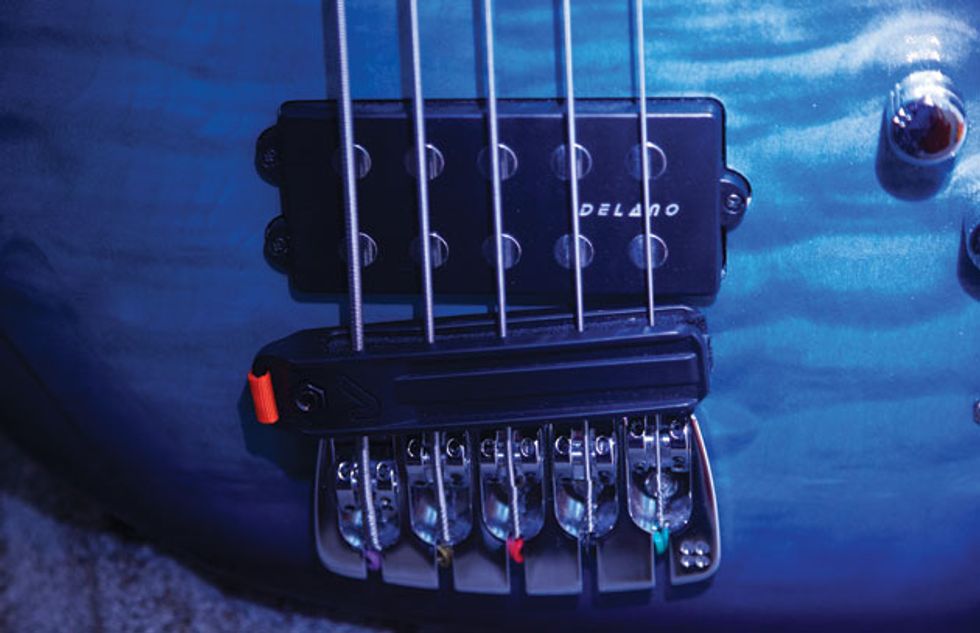We bassists are always on the hunt for the next perfect bass or, more specifically, to get closer to the perfect bass sound. The nature of having artistic blood pumping through your veins is that you can never truly be happy with the sound you have. Those moments when you feel like you’ve struck bass-tone gold or sonic nirvana are, alas, often short and fleeting.
Many of us have the luxury of owning several basses and can cover the sonic needs of a working bassist. And having all the tools of the trade at recording sessions certainly comes in handy for giving a producer or artist just what he or she needs at any given time. In most real-world applications, however, bringing this heavy and expensive toolbox wherever we go is not an option, so we’re “stuck” with getting the job done using that one magical instrument that can somehow get close to mimicking all these sounds. Disclaimer: That perfect instrument does not exist. But when you’ve picked out your one magical bass that comes the closest to being perfect, there are ways to make it switch personalities and fit in like a chameleon. This month, I’ll give you my thoughts on what’s needed to cover as many sonic bases as possible with one instrument.
When we contemplate what basses should be considered classics and providers of the must-have tones for our arsenal, the Fender Precision, Fender Jazz, Gibson EB-0, Hofner Violin, Music Man StingRay, Rickenbackers, and the Warwick and Spector families come to mind. I am well aware there are more classics and that we are swimming in very subjective waters, but so many of the records we’ve grown up on—regardless of our age—were made with these instruments.
Pickups. The bass I’ve relied on the past six years for emulating the tone of the aforementioned classic instruments is a 5-string with a Jazz-bass body—nothing out of the ordinary. Its true versatility begins with a pickup combination I wish I had started using years earlier. It’s a Music Man-style splittable humbucker in the traditional Jazz bridge position (instead of the slightly more forward StingRay position, where you often find this pickup) and a Jazz bass pickup in the neck position. Since the humbucker is splittable, it gives me the option to use it as a single-coil pickup to access a range of classic Fender bridge-pickup tone types—from Jaco to Marcus Miller—all from a bass that doesn’t look like a traditional J.
When the bridge pickup is used with both rows of magnets active, it provides a very strong presence in the low mids, at around 250 Hz, which does wonders for being heard in a dense mix on a record or through a large-arena PA system. Used in active mode, this low-mid bump also allows the bass to cop the vibe of the modern Spector or Warwick sound that’s so often heard on hard-rock records.
Passive/active switch. I am normally a fan of playing my bass in passive mode, but for the times I need a modern-rock/metal tone or a modern-fusion tone, I’m very appreciative of an easily accessible active/passive switch. That said, it’s crucial there is no volume difference between active and passive when toggling between the two. You would be surprised at how many upscale bass manufacturers make it hard to switch between active and passive without having a drastic tonal and level difference, rendering such a switch close to unusable in a real-world gigging situation. When the change between active and passive provides a different color—rather than the feeling of a completely different instrument—your FOH engineer will be very happy. Personally, I like to switch between active and passive within a song, which is a tremendously usable tool for playing a solo or adding sparkle to a slap part in a number that primarily requires a passive fingerstyle technique.
A muting device like the Fump (shown), a piece of foam, or a piece of fabric can help make a modern bass sound more vintage when used in conjunction with the tone control.
The mute. In a session when vintage soul and rock tones are needed, we simply grab a P bass with flatwound strings and call it a day, right? Since our one chosen bass also has to produce the aforementioned modern sounds, our best bet to achieve flatwound glory is to turn the tone knob way down—sometimes all the way off—and use a mute. Muting with the palm of the plucking hand limits the player to mostly playing with the thumb, so using a device made specifically for muting, like the Fump, a piece of foam, or even a sock (which I have resorted to in emergency situations) will make your modern bass capable of producing so many more tones.
Needless to say, the ability to produce several different voices from your bass is mostly in your hands, not the bass. But owning that one versatile axe and knowing how to use it is a big step in the right direction that will help make your bandmates (and your back) much happier.









![Rig Rundown: AFI [2025]](https://www.premierguitar.com/media-library/youtube.jpg?id=62064741&width=1245&height=700&quality=70&coordinates=0%2C0%2C0%2C0)












 Shop Scott's Rig
Shop Scott's Rig















































